nn
n
n He was not above middle height, with a gaunt facendominated by a hooked nose and high cheekbones, dressed in a short coat,ntrousers and waistcoat of grey cloth that look out of place in Louisville,nKentucky. Under his arm, he carries two books and he approaches the table wherenJohn James Audubon sat, in the counting house of his general store.
n
n
n
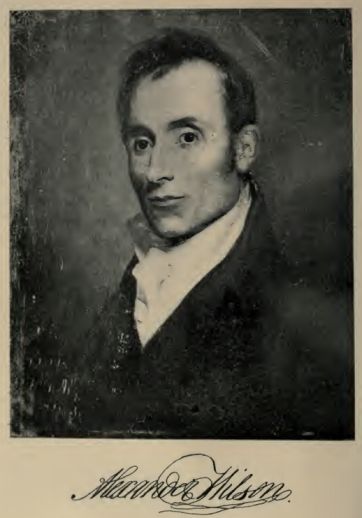 |
| Alexander Wilson |
n
n
n
nHis name isnAlexander Wilson, originally from Paisley in Scotland, but he had emigrated tonAmerica in search of a better life, like so many of his countrymen, and now henwas looking for subscribers for his book about American ornithology, samples ofnwhich he carries with him. Regardless of the cost, Audubon is keen to add hisnname to the list of subscribers, until his business partner, Frederick Rozier,nintervenes. Speaking in French, he says to John,
n
n
n
n“My dear Audubon, whatninduces you to subscribe to this work? Your drawings are certainly far better;nand again, you must know as much of the habits of American birds as thisngentleman.”n
n
n
n
n
 |
| Alexander Wilson |
n
n
n
nWe don’t know if Wilson understood the words, but he certainlynunderstands the change in Audubon’s demeanour, as he lays his pen aside. Hisnfriend’s encomiums and his own vanity have put an end to his subscription, andnWilson’s crest falls further when the Frenchman takes out a portfolio ofndrawings of his own.
n
n
n
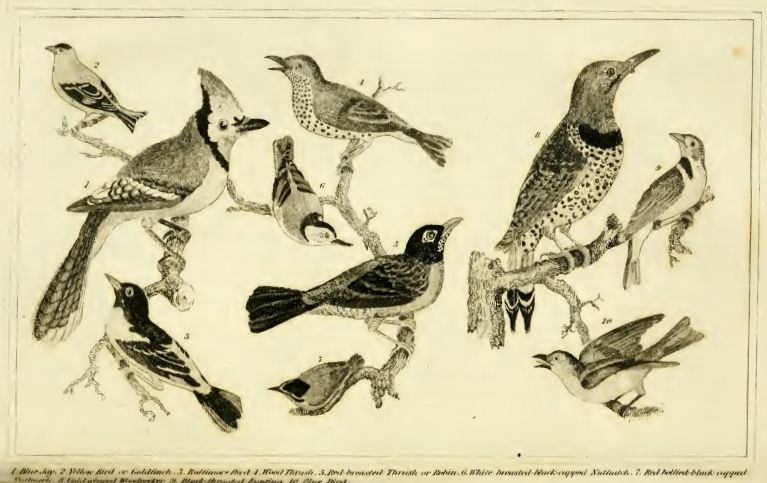 |
| Illustration from Alexander Wilson – American Ornithology |
n
n
n
nBirds. So many birds. He shudders in trepidation as henasks if the artist intends to publish and allows himself a sigh when he repliesnin the negative. He asks if he might borrow some of the drawings during hisnstay in Louisville, and accompanies Audubon on a collecting trip of species henhas not yet seen. Audubon suggests a correspondence, that Wilson may like toninclude some his drawings in his opus, all he asks is that he receivesncredit for the works used. Five days later, he leaves for Philadelphia, wherenAudubon later visits him. He is received cordially, but there is no mention ofnbirds, the drawings or the letters, and they part, never to meet again.
n
n
n
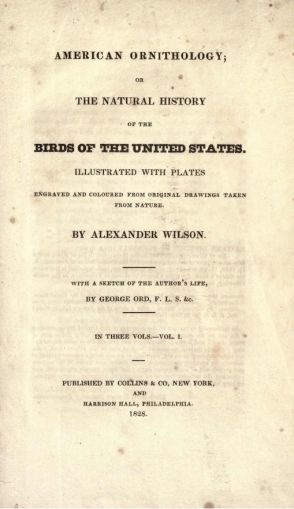 |
| Alexander Wilson – Title Page – American Ornithology |
n
n
n
nButnAudubon is surprised, if not shocked, when he later reads in volume nine ofnWilson’s American Ornithology,
n
n
n
n“I bade adieu to Louisville, to whichnplace I had four letters of recommendation, and was taught to expect much ofneverything there; but neither received one act of civility from those to whom Inwas recommended, one subscriber, nor one new bird; though I delivered mynletters, ransacked the woods repeatedly, and visited all the characters likelynto subscribe. Science or literature has not one friend in this place.”n
n
n
nWilson died, unexpectedly, in 1813, and there would be further controversy asnhis executors saw to the publication of his works, to which I will returnnlater. Meanwhile, the once prosperous Audubon and Rozier business began andownturn in its fortune, as competition moved into the area, with other storesnbeing opened, and the economic repercussions of the political policies takennprior to, and during, the Revolutionary War began to be felt. Trade embargoesnaffected European imports, and Audubon and Rozier felt that a move further downnthe Ohio river might prove to be advantageous, so they took the hundred andntwenty-five mile journey to Henderson, where they opened another store. It wasnan ill-judged move, as the country was so sparsely populated that they onlynsold the most basic of provisions, largely guns and fishing lines, and anothernmove was proposed, to St Geneviève on the Mississippi river.
n
n
n
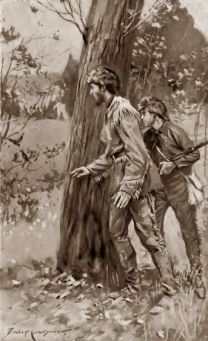 |
| Out Birding in the Wilds |
n
n
n
nAudubon and Roziernset out on a raft for the convergence of the Ohio and Mississippi, but theynbecame stranded in the winter ice, and laid up in the wilderness, hunting gamenfor food and making the acquaintance of the local indigenous people, from whomnAudubon learned a great deal about the flora and fauna. With the spring thaw,nthey proceeded to St Geneviève, where they had a little success selling whiskynthey had bought for 25c per gallon for $2 per gallon, but Audubon had no lovenfor the French-Canadians of St Geneviève, found the place dirty and noisy, andneventually he and Rozier agreed to part, with Rozier, who had married a localnwoman, buying out Audubon’s share of the stock. Audubon bought a horse andnreturned to Henderson, where his wife and infant son had stayed, narrowlynavoiding being murdered by drunken Indians along the way.
n
n
n
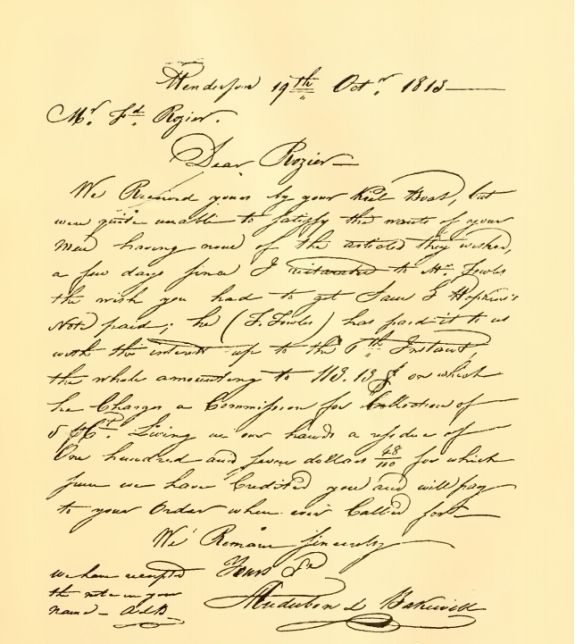 |
| Letter from Audubon to Rozier |
n
n
n
nShortly after hisnreturn, his second son was born, and in November 1813, an earthquake struck thenarea around Henderson. Audubon entered into a business partnership with ThomasnBakewell, his brother-in-law, selling flour, lard, pork and other foodstuffs onncommission, but this enterprise faltered with the outbreak of the 1812 war, butnAudubon persevered and made a success of small store located in a log cabin innHenderson.
n
n
n
 |
| The Mill, Henderson |
n
n
n
nHe was persuaded by Bakewell to invest in a steam-driven mill, innpartnership with an Englishman, Thomas Pears, with whom had had previouslynworked in the Bakewell family offices in New York. The mill had a grist millnand a steam driven saw, and the three were certain that they would make theirnfortunes, which they would had it not been for the simple reason that there wasnno grain grown around Henderson and there was no lumber trade, meaning that fornmost of the time, the mill stood idle. Audubon received news from France thatnhis father had died a year previously, leaving the estate there to him (whichnhe eventually signed over to his sister, Rosa), and seventeen thousand dollars.nHowever, by the time Audubon obtained the proof of identity required by thenmerchant holding the money, that merchant had died in insolvency, and theninheritance was lost.
n
n
n
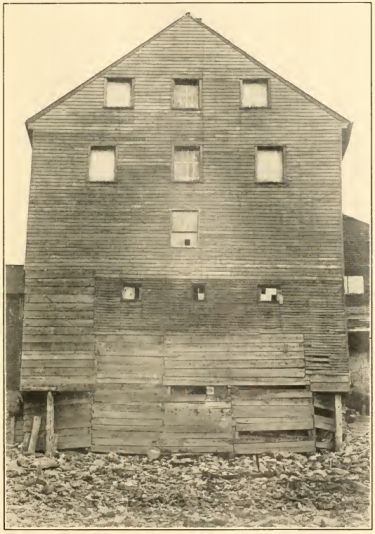 |
| Another view of the Mill |
n
n
n
nThe mill proved to be a money pit, and eventually wentnbroke, ruining all involved with mounting debts. Audubon, his wife and two sonsnleft Henderson in the clothes they stood up in, with only a gun, a dog and hisnbird drawings, and took lodgings with a relative in Louisville, where he ekednout a living selling portraits to the locals for $5 per picture.
nnn
n
nnn
nTomorrow – Changes all round.
nnn
n
nnn


















